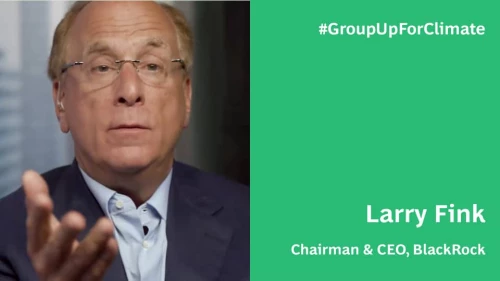Some of the most influential institutional investors and asset managers are at the forefront of a powerful movement to integrate environmental, social, and governance (ESG) considerations in their investment decisions.
At BCG, our theory of change holds that the private sector can act as a powerful agent in solving global problems—and investors can play a critical role by directing investments to companies that demonstrate ESG leadership.
Larry Fink, chairman and CEO of BlackRock, the world’s largest asset manager, is putting this theory of change into action. BlackRock is investing in companies that integrate sustainability into their business strategy. Fink is convinced that these companies will be better positioned to deliver long-term returns to their shareholders—including BlackRock’s clients.
Here, Fink talks about the future of sustainable investing, the role of investors in catalyzing better ESG outcomes, and how the climate crisis is fundamentally reshaping his firm’s approach to asset management.
The Aha Moment
I can see a world in five years where ESG is integrated into every asset class and everything we do. And I believe that’s where it’s going. We have seen billions and billions of dollars moving into more sustainable strategies. So, this tectonic shift of capital is just beginning.
For the companies that BCG is advising on transition risk, if they’re not moving fast enough, and another company in their industry is moving faster, they’re going to have outflows in their ownership—and the outflow is going to go into a company in their same industry that is moving faster. That is what we’re seeing. And that, to me, is the aha moment.
I do believe that in the next five years, we’re going to create more sustainable strategies. We’re going to create more customized portfolios. Through analytics and modeling, we can create a hybrid portfolio that closely mimics an S&P or a Russell index, and we will be able to eliminate 10% to 40% of the worst offenders in the S&P. It is a form of greenwashing if the traditional companies sell off their hydrocarbons or the worst-offending assets to some private equity firm. The net-carbon footprint of the world does not change.
Hydrocarbon Companies Must Be Part of the Solution
We need holistic solutions with government, with investors, and with companies in order to evolve. Maybe we could create a liquidating trust of the hydrocarbons managed by those traditional companies. Maybe we could create a good bank-bad bank, like we’ve done in financial services for traditional companies.
It is urgent that we have conversations with the most traditional hydrocarbon companies and work with them. They actually have some of the greatest scientists in this business, and it’s going to be those companies that are probably going to create the best alternatives, like green hydrogen.
Transition Is an Opportunity
We need to have a just transition. The best way to create a just transition is to be working with the traditional companies and helping them move faster and more productively.
The number one thing we have to do as investors is to be investing with these traditional companies and investing in new companies on finding new technologies to bring down the green premium. It took us 30 years to bring down the green premium from solar and wind to make it more competitive than coal today. We don’t have 30 years.
We need to find a solution for biofuels. We need to have a solution for all these different products. Right now, 10% of the carbon footprint is created by cement and steel. Are we going to stop building? Of course not, but we’re going to have to create new technologies. So, I look at transition risk not really as a risk. I look at transition as an opportunity.






